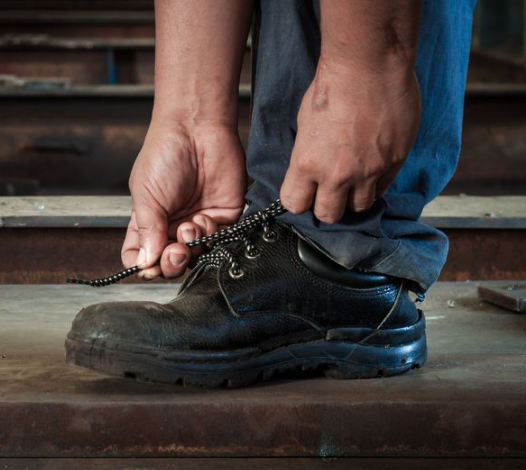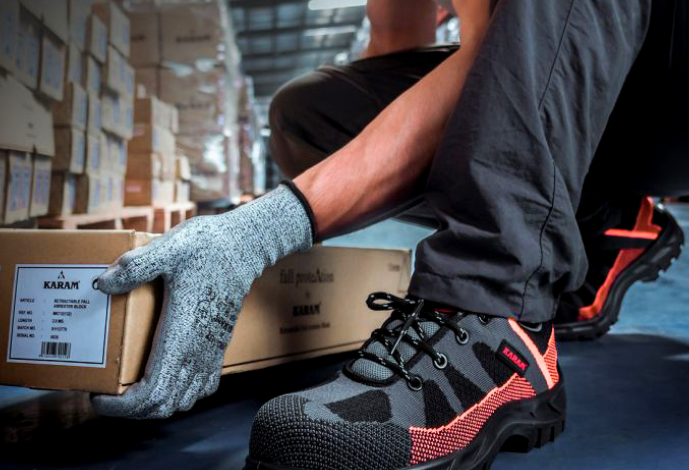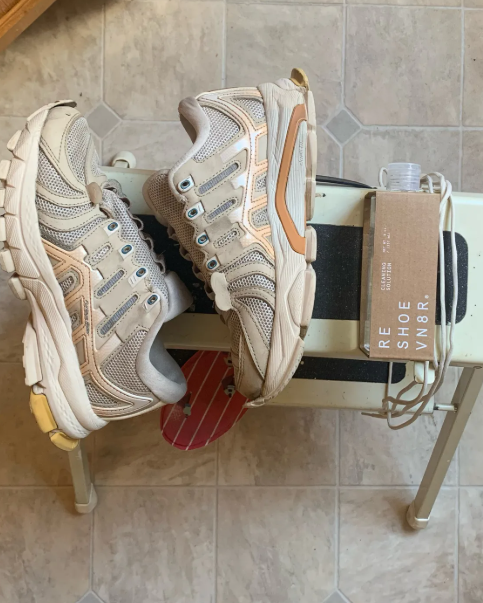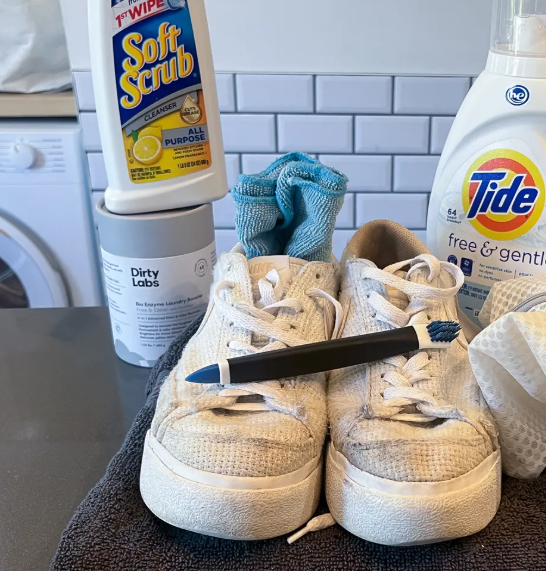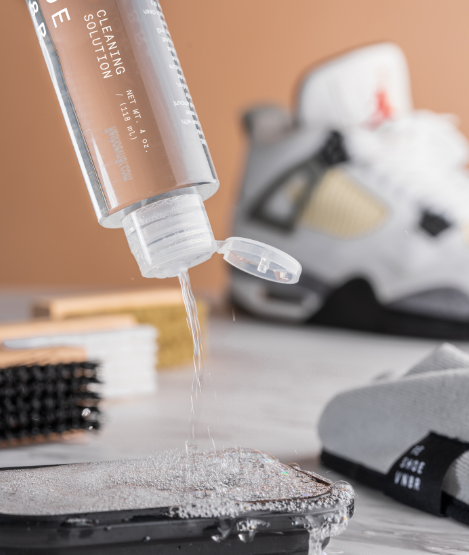
Protecting Your Feet: The Common Injuries and How to Prevent Them
Feet are one of the most vulnerable parts of the body when it comes to workplace injuries. In environments such as construction sites, warehouses, and workshops, foot injuries are common and can have serious consequences. These injuries can range from temporary work disruptions to permanent damage, which is why it’s crucial to take preventive measures.
Fortunately, many of these injuries can be avoided simply by wearing the right safety shoes. In this post, we will explore the most common foot injuries in the workplace and discuss how selecting the appropriate safety footwear can help prevent them.
The Most Common Foot Injuries at Work
Foot injuries account for approximately 7% of all workplace accidents, according to the National Institute for Research and Safety (INRS). This highlights just how important it is to prioritize foot protection.
1. Sprains and Strains
Sprains and strains are some of the most common foot injuries, typically caused by slips or missteps. Workers in environments with uneven or slippery surfaces, such as construction sites or warehouses, are particularly at risk.
Causes: Slips, falls, or poor footing on uneven ground.
Consequences: Pain, swelling, or even temporary immobility.
Prevention: Choose safety shoes with solid ankle support and stable soles, such as those with Parabolic® technology, which help prevent twisting by stabilizing the foot on uneven surfaces.
2. Crushing Injuries
On construction sites or in warehouses, the risk of crushing injuries is ever-present. Dropped tools, heavy materials, or faulty equipment can easily cause significant harm to unprotected feet.
Causes: Falling heavy objects or accidents with machinery.
Consequences: Fractures, severe injuries, or amputations in the worst-case scenario.
Prevention: Safety shoes with reinforced toe caps are essential to protect against crushing injuries. Shoes that comply with the EN ISO 20345 standard are designed to withstand impacts up to 200 joules, which is equivalent to a 20 kg weight falling from one meter.
3. Puncture Wounds
In industries like construction, nails, metal shards, or broken glass can create hazardous conditions for workers. Stepping on sharp objects can cause deep puncture wounds that can lead to infections or even more serious injuries.
Causes: Sharp objects such as nails, glass, or metal debris on the floor.
Consequences: Deep wounds, risk of infection, and the potential for surgery.
Prevention: Wear safety shoes with puncture-resistant soles made from steel or high-resistance textiles. According to the EN ISO 20345 standard, safety shoes must withstand a minimum of 1,100 Newtons of pressure. Some shoes, like those with the DuoProtection® system, offer enhanced protection for the entire sole, ensuring that your feet are safe even in the harshest conditions.
4. Blisters and Irritations
Blisters and skin irritations may seem like minor injuries, but they can be a daily source of discomfort that affects productivity.
Causes: Tight or poorly fitting shoes, non-breathable materials.
Consequences: Pain, irritation, and reduced comfort throughout the workday.
Prevention: Choose safety shoes with breathable linings that allow sweat to evaporate, keeping your feet dry and reducing friction. Additionally, opt for shoes with a good fit, and wear socks designed specifically for safety footwear to prevent friction.
5. Infections and Fungal Growth
In humid environments, or after wearing shoes for extended hours, workers are at risk of fungal infections like athlete’s foot. If not treated, these infections can turn into chronic conditions.
Causes: Prolonged moisture buildup and poor foot hygiene.
Consequences: Itching, skin irritation, and, in severe cases, infections.
Prevention: Select lightweight safety shoes made from breathable materials that promote moisture evaporation. Shoes with antibacterial insoles can help reduce the risk of fungal growth. Also, remember to change your socks regularly and allow your shoes to air out after use.
The Role of Safety Shoes in Preventing Foot Injuries
Safety shoes are not just an accessory; they are a vital tool in preventing injuries. In many industries, they are required by law to ensure workers’ protection. Safety shoes provide essential protection against a variety of hazards:
- Protection from Impacts and Punctures: With reinforced toe caps and puncture-resistant soles, safety shoes shield the feet from falling objects and sharp debris, which are common on construction sites, in factories, or in warehouses.
- Improved Posture and Reduced Fatigue: Many safety shoes are designed with anti-fatigue soles that absorb shocks, reducing strain on the legs and back and helping prevent musculoskeletal disorders (MSDs).
- Slip Resistance: Anti-slip soles are crucial in environments where floors may be wet or oily. These soles provide the necessary grip to prevent slips and falls, a leading cause of workplace injuries.
How to Choose the Right Safety Shoes
Selecting the appropriate safety shoes requires considering a few key factors:
- Material: The choice of materials should reflect the conditions you’ll be working in. In wet environments, water-resistant leather is ideal, while breathable fabrics are better for hot, dry workplaces.
- Sole Type: Depending on your environment, you’ll need a sole that fits the conditions. Anti-slip soles are essential for slippery areas, while puncture-resistant soles are necessary for environments with sharp objects.
- Comfort: Comfort is paramount since you’ll be wearing these shoes for long periods. Ensure that the shoes provide good foot support, fit well, and are suitable for the specific demands of your job.
Safety Shoes for Your Profession
Different professions require specific safety features in footwear. For example:
- Construction and Public Works: Workers in construction need durable safety shoes with protective toe caps and robust soles to withstand heavy objects and rough terrain.
- Chemical Industry: For workers in the chemical industry, shoes resistant to chemicals and splashes are necessary to avoid burns or skin irritations.
- Warehousing and Logistics: Workers in these environments need shoes with slip-resistant soles and adequate cushioning to reduce fatigue during long hours.
Maintaining Your Safety Shoes
Proper maintenance is essential to extend the lifespan of your safety shoes. Here are some tips for keeping them in good condition:
- Regular Cleaning: Remove dirt and dust regularly to prevent wear and tear on the materials. Pay special attention to the soles, as accumulated residue can affect their performance.
- Proper Storage: Store your shoes in a dry place to prevent moisture damage and mold growth. Keep leather shoes away from excessive heat to avoid cracking.
- Timely Replacement: Safety shoes don’t last forever. If the soles are worn out, the toe caps are damaged, or the shoes become uncomfortable, it’s time to replace them.
Conclusion
Safety shoes are essential for protecting your feet from injuries in the workplace. By choosing the right pair, maintaining them properly, and adhering to safety protocols, you can significantly reduce the risk of foot injuries and improve overall comfort and productivity. Make safety a priority by investing in quality footwear tailored to your specific work environment.

